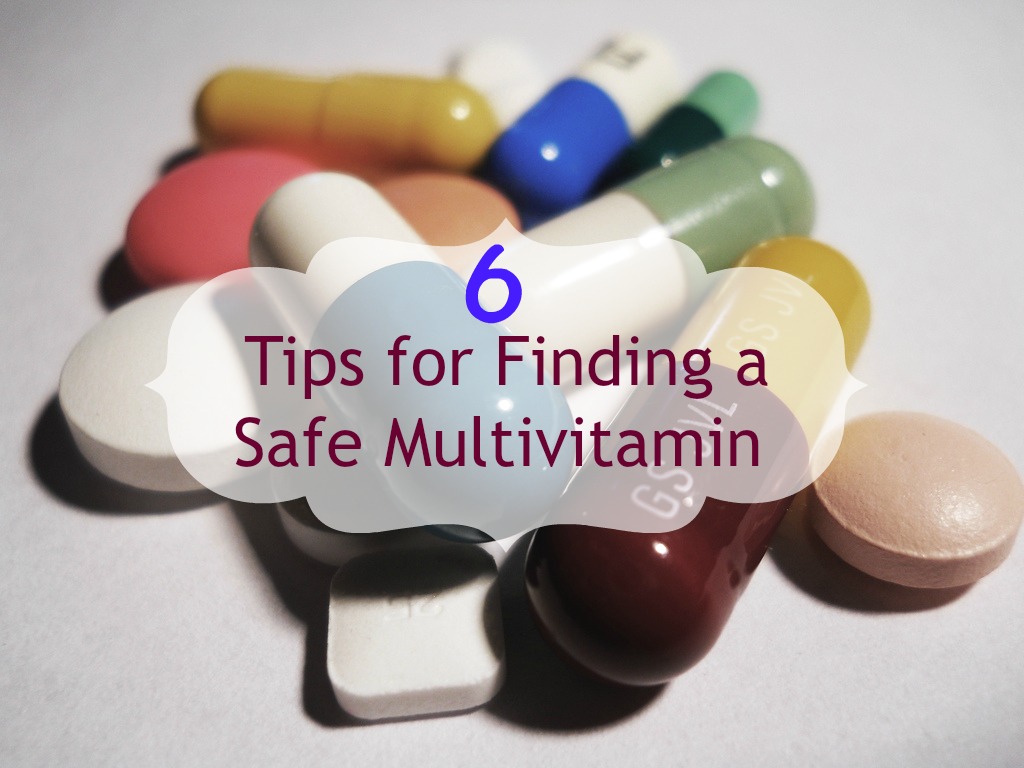I have to admit that I’m not very good about taking a multivitamin. I’ve tried on and off over the years, but I never seem to stick to it. Right now I’m taking a Vitamin D supplement and that’s it. As an aside, I found an amazing sugar-free Vitamin D gummy [2] that I really like. Yes, it’s a gummy, but I rarely miss a day.
When it comes to multivitamins there are plenty to choose from. Just walk up and down the aisles of any supermarket or health food store. It can be overwhelming.
If you’re in the market for a multivitamin there are a few things to think about before investing in a particular brand.
1. Look for simple and few ingredients
When I’m buying any processed food, including a multivitamin, I look for a short ingredient list filled with ingredients I’m mostly familiar with and ingredient names I can pronounce.
2. Avoid Added Sweeteners
Read the ingredient list. Children’s vitamins are often the worst-all those gummy multivitamins are often loaded with sugar. Look for anything ending in -ose and steer clear. More often than not these are a form of sugar: sucrose, maltose, dextrose, fructose, glucose, galactose, lactose, glucose solids, cellulose and sucrose, Also, sugar, Xylitol, high fructose corn syrup and maltodextrin. There are plenty of multivitamins on the market without added sweeteners.
3. Watchout for GMOs
Genetically Modified Organisms [3] (also called GM, GE or GMOs) refers to crop plants that are consumed by animals and/or humans that have been tweaked or modified in a lab to boost desired traits such as: the ability of the plant to produce its own pesticide, disease resistance and improved nutritional value. We want to avoid these in our food (including multivitamins) whenever possible. Watch for multivitamins with added soy, cotton, canola, corn, sugar beets, Hawaiian papaya, alfalfa, and squash (zucchini and yellow).
4. Skip the Artificial Dyes
According to the Center for Science in the Public Interest [4] artificial food dyes [5] are many times made from petroleum and possess a “rainbow of risks [6] to children.” Those risks include hyperactivity in children [7], cancer (in animal studies), and allergic reactions.
In America all food labels must spell out which artificial food dyes are used in a product. Read your labels very carefully so you can make an educated decision about the multivitamin you buy.
5. Natural Ingredients Not Synthetic
Finding a multivitamin with natural ingredients v. synthetic isn’t always easy to detect. Look for something on the label that says “whole food multivitamin or all ingredients derived from whole foods”. Also read the ingredient list to see where the ingredients come from-do they come from plants and other natural sources?
6. When Possible Look for Organic
There are a quite a few organic [8] multivitamins on the market.
In a nutshell, products with an organic certification [9] are made without the use of pesticides, synthetic fertilizers, sewage sludge, genetically modified organisms (GMOs), or ionizing radiation.
USDA certified products cannot intentionally contain GMOs. The USDA does not require testing for GMOs, so accidental contamination may occur.
Do you take a multivitamin? What’s your favorite?
P.S. If you liked this post you might enjoy our Groovy Green Livin Newsletter [10]. Receive new posts and special opportunities delivered right to your inbox! Sign up HERE [10].
Please be sure to contact your physician before taking any multivitamins
photo credit: Pills 3 [11] via photopin [12] (license) [13]
